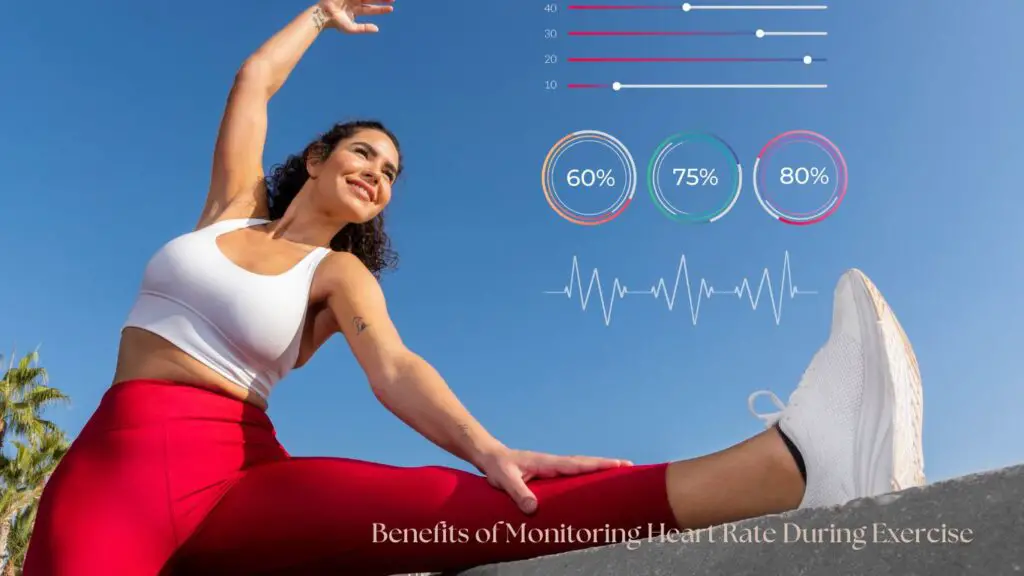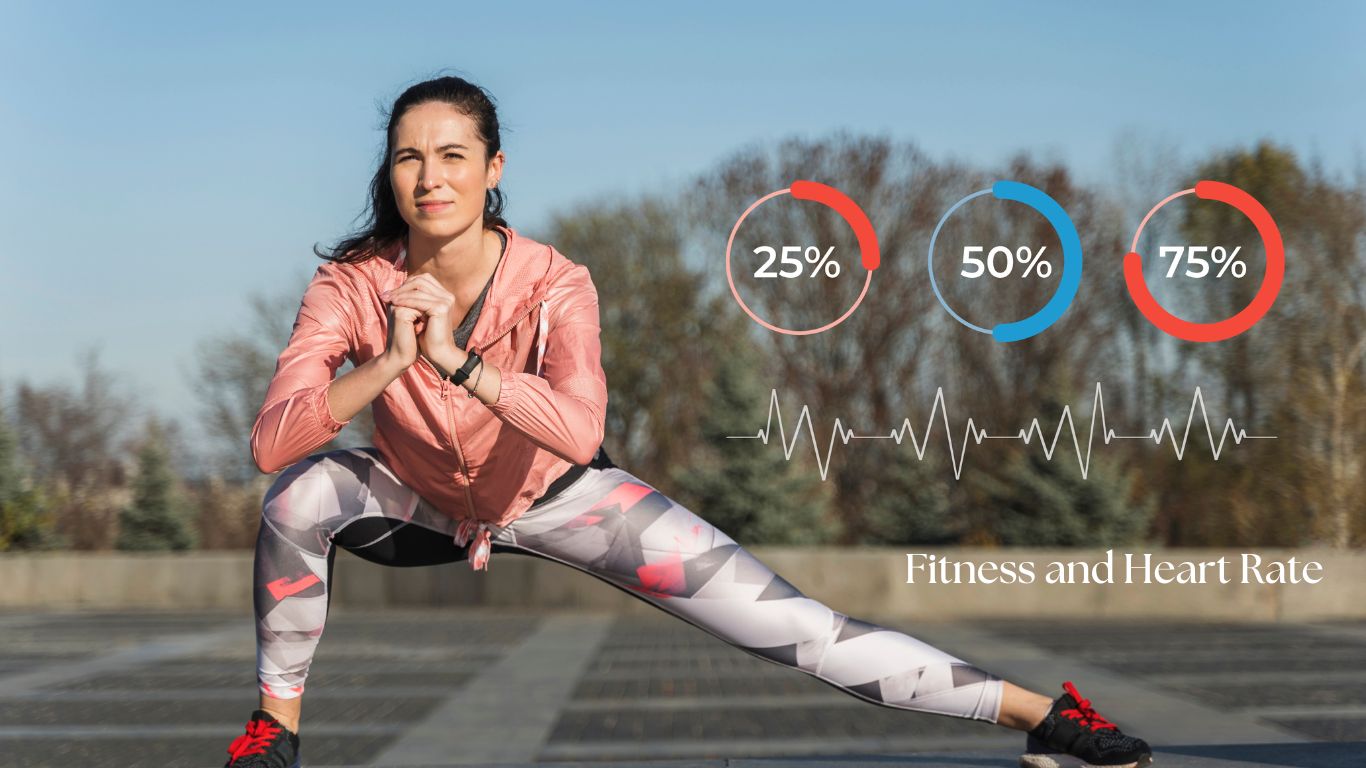If we talk about fitness and heart rate, the connection between the two is very important. When we exercise, our heart beat increases, which is a sign of a healthy cardiovascular system. But did you know that you can improve your health even more by monitoring your heart rate?
In this article, we will try to explain the basics of heart rate, how different heart rate zones improve different parts of our fitness, and why heart rate monitoring has become an essential part of today’s fitness journey. Let’s take a look at this.
What is Heart Rate?
Heart rate means the speed at which our heart beats, i.e. how many times our heart beats in a minute. We measure this in “beats per minute” (BPM).
If you want to measure your heart rate, it is quite simple. You just need to do a small thing; you can count the beats by gently placing your fingers on the pulse point of your wrist or neck; this is the easiest way. Another easy method is what we call fitness tracker, this includes smartwatches; using this you can track your heartbeat, which gives you real-time heart rate readings. For an accurate reading, it’s best to count in the resting position.
The Role of Heart Rate in Fitness
Heart rate is a very important part of the fitness journey. When we exercise, our heart rate increases, and this indicates how effectively our cardiovascular system is working. Heart rate serves as a guide for different levels and goals of fitness.
Indicator of cardiovascular health
Our heart rate tells us how strong our heart and blood circulation system is. A controlled heart rate means that our heart is pumping blood efficiently.
Monitoring Workout Intensity
Heart rate zones (e.g., fat-burning zone or aerobic zone) or humour can help us determine whether our workout intensity is appropriate for our goals.
If the heart rate is too low, the impact of the workout will be less. If it is too high, there can be a risk of overtraining.
Burning Calories
If we talk about different heart rate zones, through this we can measure how many calories are burned, especially in the fat-burning and aerobic zones.
Measure of Fitness Progress
By regularly tracking heart rate we can see whether stamina and fitness level are improving or not. As fitness improves, resting heart rate lowers.
Heart Rate Zones
Heart rate zones are divided into two separate levels at which our heart beats during exercise. Each zone has a specific goal, such as burning fat, improving stamina, or achieving maximum performance. These zones depend on the percentage of our maximum heart rate (MHR). You can calculate your MHR with the simple formula:
220 – Age = Maximum Heart Rate
1. Resting Zone (50-60% of MHR)
This zone occurs when we do low-intensity activities, like walking or stretching. What are its benefits? It improves recovery and gently strengthens the heart.
2. Fat-Burning Zone (60-70% of MHR)
In this zone, the body uses more fat for energy. This zone is perfect for steady-state cardio like brisk walking or light jogging.
Its benefits: It reduces fat and helps in weight management.
3. Aerobic Zone (70-80% of MHR)
This zone is for medium-intensity workouts, like running, cycling, or swimming.
If we talk about the benefits: It improves stamina and lung capacity, and boosts overall cardiovascular health.
4. Anaerobic Zone (80-90% of MHR)
High-intensity workouts like sprinting or HIIT happen in this zone.
Benefits: Improves speed and endurance, and increases the body’s lactic acid tolerance.
5. Maximum Effort Zone (90-100% of MHR)
This zone is only for advanced athletes, where maximum performance and effort is required.
Benefits: Achieving peak performance and testing the body’s limits.
Heart Rate Zones Ka Use Kaise Karein?
Choose a zone according to your fitness goals. Workout in the fat-burning zone for fat loss, and target the aerobic zone to build endurance. Using a fitness tracker for heart rate monitoring is helpful.
Target Heart Rate (THR) Zones by Age
Your THR is a percentage of your MHR, typically between 50-85%, depending on the intensity of your workout. Below is an approximate guide for different age groups:
| Age | MHR (220 – Age) | 50-60% (Light) | 60-70% (Fat Burn) | 70-80% (Aerobic) | 80-90% (Anaerobic) |
| 20 | 200 | 100-120 BPM | 120-140 BPM | 140-160 BPM | 160-180 BPM |
| 30 | 190 | 95-114 BPM | 114-133 BPM | 133-152 BPM | 152-171 BPM |
| 40 | 180 | 90-108 BPM | 108-126 BPM | 126-144 BPM | 144-162 BPM |
| 50 | 170 | 85-102 BPM | 102-119 BPM | 119-136 BPM | 136-153 BPM |
| 60 | 160 | 80-96 BPM | 96-112 BPM | 112-128 BPM | 128-144 BPM |
Benefits of Monitoring Heart Rate During Exercise
Monitoring heart rate during exercise makes your fitness journey more effective and safe. Apart from this, it also helps you in achieving your new goals and prevents you from overtraining.

1. Prevent Overtraining or Undertraining
If the heart rate is too low, it means that the exercise intensity is low and you are not using your full potential.
If the heart rate is too high, you may be overtrained, which can increase the risk of injury or fatigue.
2. Optimize Workouts for Specific Goals
You should customize your exercise according to the different heart rate zones.
For fat loss: Workout in the fat-burning zone (60-70% of max HR).
To build stamina: Target the aerobic zone (70-80% of max HR).
3. Track Progress
Your fitness can be improved by monitoring your heart rate.
For example, a low resting heart rate and a fast recovery time show that your fitness level is improving.
4. Enhance Recovery
Tracking post-workout heart rate optimizes recovery. If the recovery heart rate is slow, rest and proper hydration are needed.
5. Motivation and Focus
Getting real-time feedback makes it easier to stay focused and motivated. This lets you know whether you’re in your target zones or not.
Heart rate monitoring is a smart and scientific approach that makes workouts more productive and enjoyable. Would you like tips on choosing a good heart rate monitor or tracker?
How to Improve Heart Rate for Fitness
It is very important to have a balance between better heart rate and fitness that is based on regular exercise, a healthy lifestyle, and proper self-care. Cardio workouts like running, cycling, swimming, and brisk walking strengthen our heart and improve cardiovascular health. Target at least 150 minutes of moderate cardio or 75 minutes of intense cardio each week. High-Intensity Interval Training (HIIT) is also very effective, as this combination of short bursts of intense activity and rest periods boosts heart rate and endurance.
Strength training should also be part of your routine, as it helps build muscle while lowering your resting heart rate. The most important thing is consistency—regular and balanced workouts are better for long-term results. Managing stress is also important, as it can negatively affect your heart rate. Meditation, yoga and deep breathing exercises are effective ways to control stress.
Adopting a healthy lifestyle plays a major role in improving heart rate and fitness. Maintaining a balanced diet rich in fruits, vegetables, lean protein and healthy fats, and staying hydrated are very important. Avoiding smoking excess alcohol is important for heart health.
Quality sleep is equally important; getting 7-8 hours of proper sleep helps the heart recover. You should use a fitness tracker or smartwatch to monitor your progress so that you can adjust your routine and achieve your goals. With consistent effort and mindfulness, significant improvements can be brought about in heart rate and fitness.
Conclusion
Understanding and monitoring your heart health is an important part of your fitness journey. It is not only an indicator of overall health but also helps optimize your workouts. A key combination of regular exercise, balanced diet, stress management, and quality sleep can improve heart rate and fitness. With consistency and patience, you can build a strong foundation for achieving your goals. Tracking your progress and understanding your body’s signals makes your journey more effective and rewarding. Ultimately, a healthy heart is the key to a healthy life!

